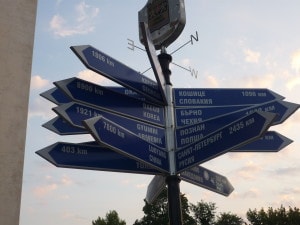Subscribe to our newsletter
Ian Mulvany’s Science on the Web Excursions – #IansWebExcursions
 Ian Mulvany is head of technology at eLife which is a not for profit Open Access publisher supported by the world’s leading scientific research funders – the Wellcome Trust, the Max Planck Society and the Howard Hughes Medical Institute.
Ian Mulvany is head of technology at eLife which is a not for profit Open Access publisher supported by the world’s leading scientific research funders – the Wellcome Trust, the Max Planck Society and the Howard Hughes Medical Institute.
He works on publishing platforms, innovative ways of displaying research content, and on understanding how technology can help to improve scientific communication.
I’ve had an idea for a while now about creating a series of blog posts about things that interest me on the web that relate to science.
 I’ve been interested in how the web interacts with science for some time now, and back in the dark ages of 2007 I even had a hand in running one of the first `science 2.0` websites. Since then I’ve gone on to work on software projects of various sizes and learned the hard way about the — possibly unnecessary — intricacies of the scientific publishing toolchain. My early naive enthusiasm has evolved over time into a more subtle appreciation for the difficulties of creating things on the web of real and lasting value, but I retain my magpie-like eye for shiny new things.
I’ve been interested in how the web interacts with science for some time now, and back in the dark ages of 2007 I even had a hand in running one of the first `science 2.0` websites. Since then I’ve gone on to work on software projects of various sizes and learned the hard way about the — possibly unnecessary — intricacies of the scientific publishing toolchain. My early naive enthusiasm has evolved over time into a more subtle appreciation for the difficulties of creating things on the web of real and lasting value, but I retain my magpie-like eye for shiny new things.
I’ve been bookmarking interesting things under the scienceontheweb tag on pinboard, but I usually don’t add any context to those bookmarks.
I’ve also bee a a fan of the short web excursions posts from Brett Terpstra. Borrowing from that format, and applying it to my interest in things sciency on the web, I’m going to have a go at creating a series of short posts describing things that tickle my fancy that are related to science on the web.
So without further ado, I present to you my Science on the Web Excursions for November 2015:
A new online journal that publishes “observations” rather than “stories”
There are a couple of interesting things about this approach. They are aiming to encourage submissions to be created through their own web interface, bypassing the awful pain of conversion from Word to a publishable unit. As they are looking at micro-contributions — they also have a micro fee of $150 (though there is a generous free limit before hitting that).
Two names that leapt out at me on their advisory board are Paul Ayris, from Imperial, and John Ioannidis, from Stanford. It’s nice to have people like that named on your advisory board.
I feel their pitch is that this is a new approach that’s going to change the way we communicate science. God only knows, it does need to change, and a claim like this is resonant enough to borrow the language of disruption.
However, the great likelihood is that this initiative may just become another outlet contributing to the daily flood of facts that we as a species generate about the world around us. If it does succeed at that, it will be no bad thing, however by placing a stake in the ground about the kinds of disruption that is needed, ahead of the existence of a product, they may be placing hurdles in their own way to achieving that goal.
Simply, a delightfully large list of services that provide APIs that serve scholarly information.
I didn’t know that ArXiV had an API — shame on me. There are lots of nice bibliographic and indicator APIs listed. I’d love to see an API in there for grant information. This is a must have list for anyone thinking about running a science hack day.
Mirador is a tool for finding correlations in complex data sets.
I downloaded it, and had a little play with some of the sample data sets. The tutorial videos are short and insightful, and it looks like a really interesting tool. I’ve not had the time to push any of the business data from eLife through the tool, and am unlikely to have time to do this, but if we are looking to do any analysis of this kind in the future, I’ll reach for Mirador to see what it can do for us.
A paper describing a new way to really determine how impactful a paper has been
…and goodness, don’t you know, most impactful papers have not been published in Cell, Nature or Science. I’ve not read through the paper as I need to, but I have a couple of thoughts. It’s not surprising at all the manifestly important papers are mostly not published in high visibility journals. That’s the nature of discovery, we mostly don’t know what is going to prove to be useful until we have tried using it. We are awfully short-sighted as a species.
It’s tragicomic that there is an attempt to slap a metric on this.
It’s even more tragic that the data this study was based off, is a proprietary data set, meaning that even if the method is found to be sound, the technique cannot be reused by everyone.
A site that extracts, and shows all of the images from a number of key astronomy journals.
You can search key terms, restrict by journal and year range. It’s been developed by the AAAS and has been around since 2013. This is just brilliant, I want one of these for every artifact type in every disciple. Why has no one done of these as an overlay project on top of EUPMC? I think something like this provides the utility that Matters aims for, but as a by-product of good metadata. I love this.
The name is clearly trying to ape `Google Scholar`
…and it is supported by the Allen Institute, so they can probably put as many resources on this as the Google Scholar team have, though I expect that they have not done that yet. It looks like they have created a graph that shows which papers use which data sets, but I’m not convinced that the interface is compelling enough to be able to make these kinds of relations sufficiently more useful in the context of free text search, rather than returning the results of a vanilla free text search over a corpus.
Wrap-up
So that was my initial scattershot of a list. There is no real unifying theme other than my feeling that what I’m bookmarking has some characteristic of interest to me. I’m a rather inconsistent participant of the web these days, so I don’t expect to be able to produce a post like this on a regular basis. I will aim to write one up every time I get somewhere between six and ten new sites bookmarked. Keep an eye out for the next one and follow online using #IansWebExcursions.
